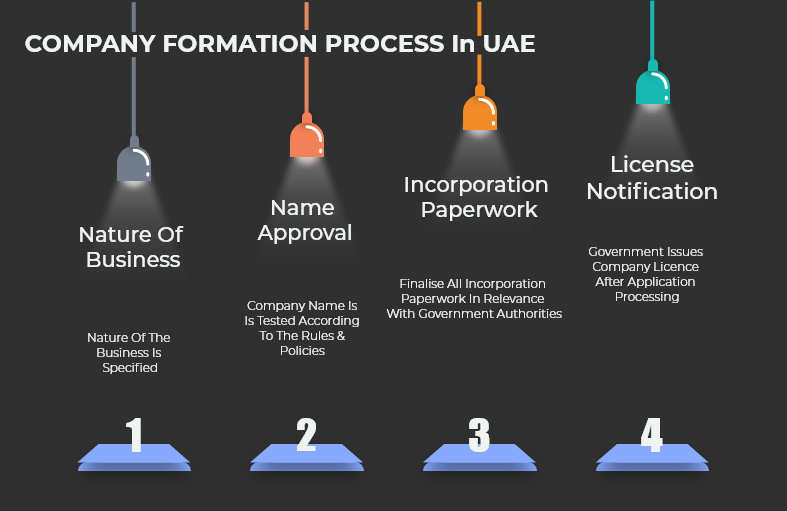Integrating the Commercial Registration Electronic System into Your Company Formation Approach
Integrating the Commercial Registration Electronic System into Your Company Formation Approach
Blog Article
Browsing the Complicated Globe of Firm Development: Insights and Methods
Getting started on the trip of developing a business can be a complicated job, specifically in a landscape where guidelines are regularly evolving, and the risks are high. As business owners set out to navigate the elaborate world of business development, it comes to be important to outfit oneself with a deep understanding of the intricate subtleties that specify the procedure. From picking one of the most suitable organization structure to guaranteeing rigorous lawful compliance and creating reliable tax preparation techniques, the path to developing a successful business entity is riddled with complexities. By untangling the layers of intricacies and leveraging informative strategies, business owners can pave the way for a solid foundation that sets the stage for future development and sustainability.
Company Framework Option
In the world of business formation, the critical decision of selecting the ideal company framework lays the foundation for the entity's lawful and functional structure. The selection of service framework significantly impacts various aspects of the company, consisting of taxes, obligation, administration control, and conformity demands. Business owners have to thoroughly review the offered alternatives, such as single proprietorship, partnership, limited responsibility company (LLC), or company, to determine one of the most suitable structure that straightens with their company objectives and scenarios.
One usual structure is the sole proprietorship, where the proprietor and the business are considered the exact same lawful entity - company formation. This simplicity enables convenience of development and complete control by the owner; however, it likewise entails unrestricted personal responsibility and possible challenges in raising funding. Partnerships, on the other hand, involve two or even more individuals sharing revenues and losses. While collaborations supply shared decision-making and resource merging, partners are personally responsible for business's commitments and debts. Understanding the nuances of each service framework is vital in making an informed choice that establishes a strong groundwork for the company's future success.
Legal Conformity Fundamentals
With the structure of an ideal company framework in location, making certain legal conformity fundamentals becomes vital for guarding the entity's operations and maintaining regulatory adherence. Legal compliance is crucial for business to run within the borders of the regulation and avoid possible penalties or legal concerns.
To ensure legal conformity, companies must frequently assess and update their plans and treatments to mirror any modifications in laws. It is also important to educate workers concerning compliance demands and supply training to mitigate risks. Looking for lawful guidance or compliance specialists can further assist firms navigate the intricate lawful landscape and stay up to date with evolving policies. By prioritizing legal compliance fundamentals, organizations can build a solid foundation for sustainable growth and long-lasting success.
Tax Obligation Preparation Considerations

Furthermore, tax planning should include methods to benefit from readily available tax obligation rewards, credit scores, and reductions. By tactically timing earnings and costs, companies can potentially decrease their gross income and overall tax burden. It is additionally essential to stay educated concerning changes in tax legislations that might impact business, adjusting strategies appropriately to continue to be tax-efficient.
Moreover, global tax preparation factors to consider may occur for services running across boundaries, involving intricacies such as transfer prices and foreign tax debts - company formation. Looking for support from tax obligation specialists can aid navigate these website link ins and outs and establish a comprehensive tax obligation strategy customized to the firm's requirements
Strategic Financial Management
Reliable monetary administration includes a detailed approach to managing a business's monetary sources, financial investments, and overall financial health. By producing in-depth spending plans that straighten with the business's goals and objectives, services can allocate sources efficiently and track performance versus monetary targets.

One more important aspect is capital management. Keeping an eye on cash inflows and discharges, handling working capital successfully, and guaranteeing enough liquidity are essential for the everyday operations and long-lasting practicality of a firm. In addition, calculated economic administration includes risk assessment and mitigation strategies. By recognizing economic threats such as market volatility, credit threats, or regulatory modifications, business can proactively apply actions to protect their monetary security.
In addition, monetary reporting and analysis play an essential duty in tactical decision-making. By generating exact economic reports and conducting extensive evaluation, businesses can gain useful understandings into their financial performance, determine areas for improvement, and make informed calculated options that drive lasting growth and profitability.
Development and Development Methods
To propel a firm towards boosted market visibility and profitability, critical growth and expansion methods need to be carefully developed and applied. One effective technique for development is diversification, where a company enters brand-new markets or offers brand-new product and services to decrease risks and exploit on emerging chances. Another technique is market infiltration, concentrating on raising market show to existing products in present markets via hostile advertising or rates techniques. In addition, calculated collaborations or partnerships with various other businesses can give accessibility to brand-new resources, innovations, or markets that increase growth. Furthermore, mergings and acquisitions can be tactical for expanding market reach, acquiring affordable advantages, or acquiring essential talent. It is crucial for companies to carry out extensive market research study, financial evaluation, and threat evaluations prior to starting any growth approach to i was reading this guarantee sustainability and success. By thoroughly planning and executing growth approaches, firms can browse the intricacies of expansion while taking full advantage of worth for stakeholders.

Conclusion
To conclude, navigating the intricacies of firm development requires mindful factor to consider of service structure, lawful conformity, tax planning, monetary management, and development approaches. By tactically choosing the ideal business framework, making sure legal conformity, preparing for tax obligations, taking care of finances effectively, and implementing growth methods, firms can set themselves up for success in the affordable organization environment. It is necessary for organizations to come close to business formation with a thorough and calculated mindset to attain long-term success.
In the world of business development, the crucial decision of selecting the suitable company framework lays the foundation for the entity's functional and lawful framework. Business owners have to carefully evaluate the available alternatives, such as single proprietorship, collaboration, limited liability company (LLC), or company, to determine the most appropriate framework that aligns with their organization objectives and scenarios.
By producing detailed check it out budget plans that straighten with the company's objectives and goals, companies can designate resources effectively and track performance versus monetary targets.
In final thought, browsing the complexities of firm formation requires careful factor to consider of service framework, legal compliance, tax preparation, economic management, and growth strategies. By tactically picking the appropriate company structure, guaranteeing legal compliance, planning for tax obligations, taking care of funds successfully, and executing growth approaches, firms can establish themselves up for success in the affordable company environment.
Report this page